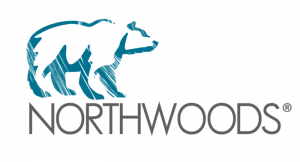Manual processes have long been a feature of human services agencies. And for generations, pools of caseworkers have compensated for clunky systems.
The pandemic made a bad situation worse. Ad hoc solutions kept agencies operating during the pandemic, but the workarounds were often half-measures that lacked robust functionality, including adequate security controls. In time, these half-measures opened the door to fraud.
“We finally got to a point where people couldn’t solve this challenge by working harder,” said Don Abney, Executive Vice President and Chief Technology Officer at Northwoods.
Poor-performing legacy systems affect all stakeholders in social services:
Clients: Legacy systems often hurt the most vulnerable applicants: people working multiple jobs, parents without access to child care and people without reliable transportation. For some, the stigma of receiving government assistance is a deterrent to seeking help if applying requires an in-person appearance.
“Many clients don’t have access to a car. They can’t take time off of work. Some programs require you stay on the phone for hours at a time,” said Mary-Sara Jones, Principal Business Development Executive for Health and Human Services at AWS.
Caseworkers: Legacy systems have the unfortunate effect of turning compassionate caseworkers into paper-pushing bureaucrats, often leading to high turnover rates. “Caseworkers want to help,” Jones said. “They don’t want to stare at papers. They want to work with their customers.”
Agency leaders: Modern IT tools facilitate the oversight of programs and stewardship of public funds. “The need is urgent,” Jones said. “Agencies have realized that they’re providing services on a burning platform.”
IT: For the IT department, managing a patchwork of legacy systems is a complex and thankless task. The systems drain resources, requiring an increasing amount of time and energy to maintain, yet providing little return on that investment.
Solution: Cloud-Based Mission Support
In a post-pandemic world, agencies will need an end-to-end, cloud-based digital system that supports remote work in the near term while modernizing critical IT systems for the long haul. Seamless document management solutions support agencies’ remote workers, enable self-service options for validating applicant eligibility and provide the operational visibility they need to manage remote workers. Next-generation systems also:
- Support work from anywhere, while fostering collaboration and enhancing security
- Empower clients by allowing them to submit documents and communicate with caseworkers on their own time
- Reduce administrative burdens and enable supervisors to manage remote workers
- Save IT resources when managing uptime, security and disaster recovery
- Promote transparency, system reliability and real-time reporting
Clients: Private-sector companies have used web applications to improve interactions with customers, and now the public has come to “expect government solutions are just like the best retail experience online,” Jones said.
Cloud-based systems can help agencies close the customer experience gap, enabling clients to apply for services and submit documents at their convenience, on any device they choose. Clients can track applications and repurpose submitted documents to apply for multiple programs. “It is no longer ‘take a number and hope you get a person who understands what you’re going through,’” Abney said.
Caseworkers: A robust solution developed for health and human services agencies enables caseworkers to process applications faster “because they don’t have to enter manual forms into the data system,” Jones said. “A seamless digital solution automates eligibility verification processes and allows caseworkers to focus on high-value tasks.”
Leadership: Advanced reporting makes it easier to manage programs, comply with mandates and be good stewards of public funds. Better operational data supports better decision-making.
This article is an excerpt from GovLoop’s report, “Lessons From the Pandemic: Transforming State and Local Eligibility Programs.” Download the full report here.






Leave a Reply
You must be logged in to post a comment.